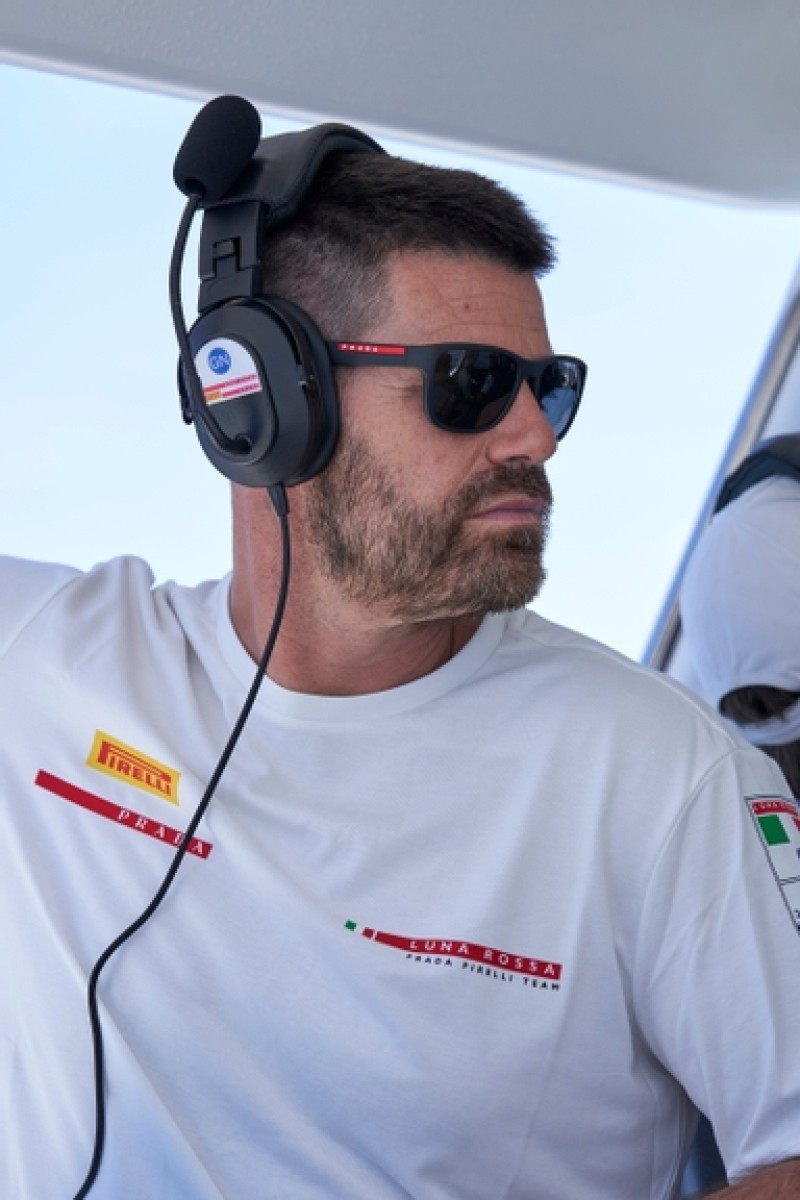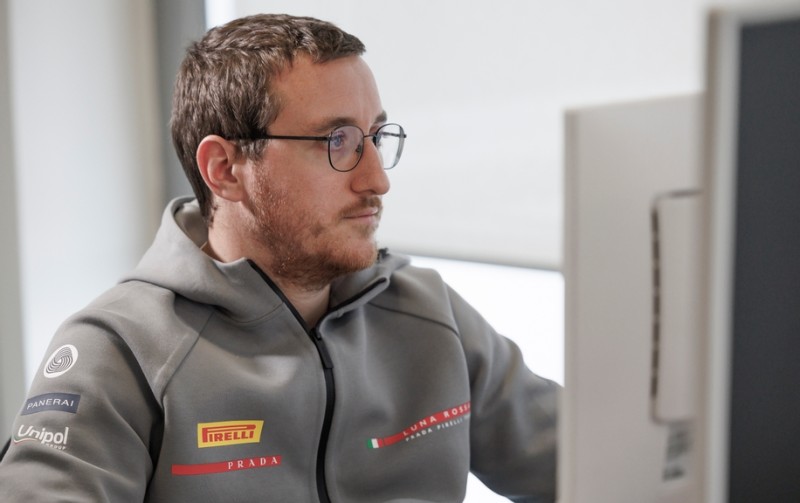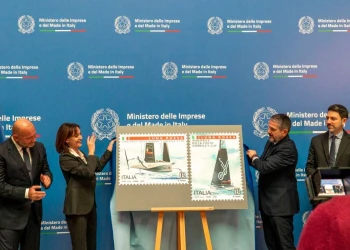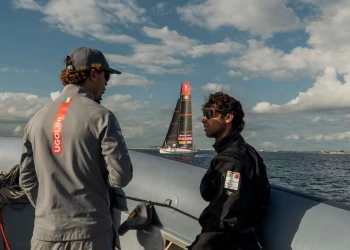
America's Cup: Mechatronics, this (un)known
America's Cup: Mechatronics, this (un)known
All third millennium fans of the America's Cup know that AC75 foiling monohulls are considered the 'children' of Mechatronics, although very few understand the real meaning of this word; even its definition “the science that arises from the integration of mechanics, hydraulics and electronics to design, develop and control systems and processes with a high degree of automation and integration” doesn’t help much to get a clearer picture. In fact, the Mechatronics department is quite complex because it encompasses several important development areas, all of which strongly interconnected. The best person to explain the workings of this department within Luna Rossa Prada Pirelli is Gilberto Nobili, who oversees it. A Computer Systems Engineer and grinder on board Luna Rossa in 2003, 2007 and 2021, 'Gillo' is also the team's Operations Manager e runs the team program in the short, medium and long term.
«The very name of the department», Nobili begins, «suggests constant and continuous collaboration and interaction of computer systems with high-pressure mechanical and hydraulic actuations. To better understand what this is all about we can take a step back to the 2007 Valencia Cup: everyone probably remembers the tailers who adjusted sails by trimming the tension of the sheets on the winches driven by the mechanical movement of the grinder pedestals. Nowadays, between the action of the crew member and the actuation (i.e. the movement of the sail or any other moving surface on board, such as daggerboards and rigs), we have some layers, a sort of interacting level in between, made up of control devices, that are tough industrial computers – specifically designed for automatic controls - and a hydraulic circuit that can reach 600bar (well beyond the industry standard which is usually 350bar). At the end of this process comes the more traditional mechanical actuation which, due to the high speeds involved, must often deal with very extreme miniaturization of the systems and materials with special mechanical characteristics. At the heart of these layers is the software that manages and coordinates the drives, because the reliability and precision of the controls on boats like the AC75 is crucial».

Two engineers who interact with Nobili on a daily basis are Clelia Sessa, who deals in particular with the arms (Foil Cant System) and the mechatronic engineer Michele Crotti, who leads the development of the entire ECC (Electronic Control Circuit) program which, as he explains, «is the on-board system responsible for the shape and movement of the sails, as well as the trim tabs and the rudder (through which we also adjust the height and pitch angle of the boat). I take care of the systems software and configuration, as well as the maintenance and diagnostics of the electronics part which, as you can imagine, is essential on these boats and works in a hostile environment like sea water; in fact, we carry out continuous checks to make sure it always works correctly. I mainly interact with the electronics and hydraulics departments and check that there are no anomalies to report, because both the racing results and safety on board depend on the reliability of these checks. To summarize, we can say that the sailors carry out on-board checks for devices custom made in-house that are logged and that then send the data to us live on the support boat. In regattas, compliant to the rules, some data are visible 'live' to the sailors; others, instead (boat speed, wind, direction), go through a media box that delays them by about 2 seconds. It sounds simple, but in truth these are very complex systems. Just to give you an idea, there are over 25 cylinders, about 80 hydraulic valves and over 200 sensors on board. Not only, but all the devices used by the sailors are produced in-house; the crew members choose the shape and the device they consider most suitable for their tasks and these are then designed and printed in 3D by Stefano Baruffaldi, who is also involved in the assembly of the electronics together with the shore team's electronics department».
Considering that we are talking about foiling boats, the most delicate part of the control system is the one relating to flight management, one of the few that, by regulation, can be powered by batteries. «Contrary to what many people think», Nobili continues, «today, as in 1851, it is always the man who controls the machine, who controls the actuation, who decides when and where he wants to go. In racing, autopilots are not allowed, which is why it is crucial to have precise and effective actuations and systems. Just like on an aircraft, the AC75 needs a reliable and accurate control of the appendages to allow the crew to fly the boat in all conditions with the limited energy available».
This is where Andrea Zugna, in charge of the flight system and actuation management, comes into play: «The AC75, the prototype and the AC40 have in common the fact that they combine a sailboat with an aeroplane in gliding flight and, from this edition, also over rough terrain (the waves in the open sea of Barcelona)», explains the mechanical engineer. «The regulations separate the aero rig (mast and sails) from the flight controls (hydrodynamic appendages that are underwater). All the controls on board are hydraulic, but while those on the appendages are battery-powered, the aero controls receive power from the four cyclors (or grinders). What these systems must have in common is reliability and adaptability, as well as the ability - like music - to switch from a soft 'tone' to a very rhythmic one and to do so promptly and with the utmost precision, so that the boat can react quickly to a change in trim. My job is to design - together with designers and mechatronics - the hydraulic and electronic hardware, trying to transform the needs of sailors into a tool that, at the push of a button, performs a simple function».

History teaches us that to win the America's Cup you need a fast boat and, to achieve this, «you have to take into account not only the control part, but also performance and all the information that is important for development», Nobili continues. This is carried out by the performance and ILS (Information Logging System) people who, by analyzing the data transmitted by the on-board sensors, measure and evaluate all the information that may be important for navigation, development, and maintenance. This information – of which the sailing team receives only a small part (and delayed by a few seconds, if any, for direct control), via a system known as CIS (Crew Information System) - is available in its entirety and in real time both to the support boat and to the designers on shore.
Working in this department are Chad Turner (performance evaluation and sea test management), Marco Benini (AI - Artificial Intelligence), Dan Jowett and Roberto Berrozpe (ILS), Andrea Bazzini (Sail Vision and Racing Software) and Denis Corti (telemetry, data distribution and visualization).
«Simulation also plays a fundamental role» continues Nobili. «Simulation with CFD (Computational Fluid Dynamics), FSI (Fluid Structure Interaction), etc. is certainly not new (although it has made great steps forward), but today, compared to the past, dynamic simulation and validation of the tools with data collected on the water are increasingly important; in fact, we can now count on real-time simulation tools with which sailors can manage the handling of the boat in a controlled environment as if they were at sea. In the simulation group we have Davy Moyon, Jean-Claude Monnin and Marco Gomiero who, in addition to developing the simulator, interacts with other departments to adapt the simulation to the measurements of the boat at sea».
Marco Gomiero, a mechanical engineer and responsible for the development of the simulator, explains that his work involves «the development and use of numerical models that are used to replicate the conditions of the boat when sailing dynamically. Compared to the past, the simulator now comes into play as early as the design phase of a boat; in addition to making tests in the towing tank obsolete (with a significant saving in terms of time and costs), it allows any element (foil, sail, rudder) to be replicated and tested by the sailors in a virtual and controlled environment. The feedback then reaches the designers for possible improvements or modifications. An important part of my work is the analysis of the data coming from the boat because these will then be compared with those from the simulator to make sure there is always a certain degree of consistency. The simulator is also able to replicate realistically the weather conditions that the boat will face during the race, such as waves, wind, gusts, etc.».

Andrea Bazzini, on the other hand, is in charge of Sail Vision and Racing Software: «Sail Vision», explains the software engineer, «is a system that allows us to measure the shape of the sails while we are sailing in a flying mode; it is based on optical systems (cameras) that I am in charge of developing together with Racing Software (the program that allows the helmsmen - and the crew acting as navigators - to know their position on the race course and to have the times for the starts and approaching the boundary or buoys). As far as the Sail Vision is concerned, my work hasn't changed much compared to the previous edition: although we will no longer be able to use it in real time during races, but only in training, the development and post-processing part will be the same. The Racing Software for this edition however will be provided by the organization and will be the same for everyone. I am obviously in close contact with the sailors, as far as the Racing Software system is concerned, and with the helmsmen, the tacticians, navigators and the sail design team for Sail Vision. The goal is to constantly improve these tools to optimize the overall performance of the boat».





